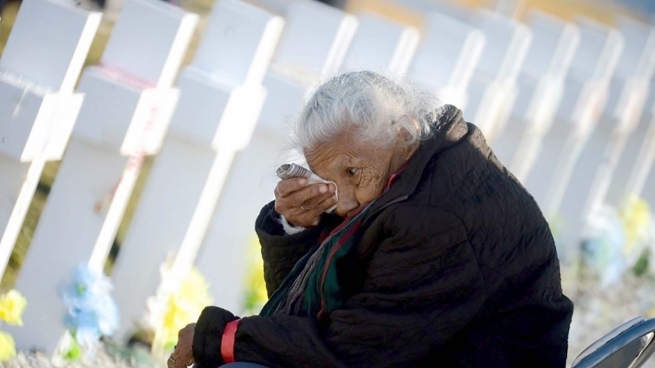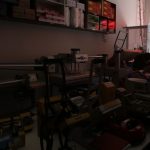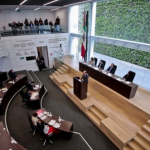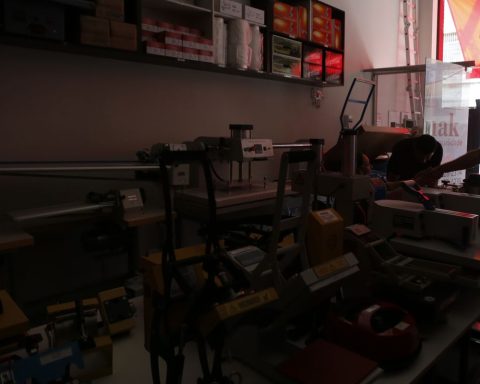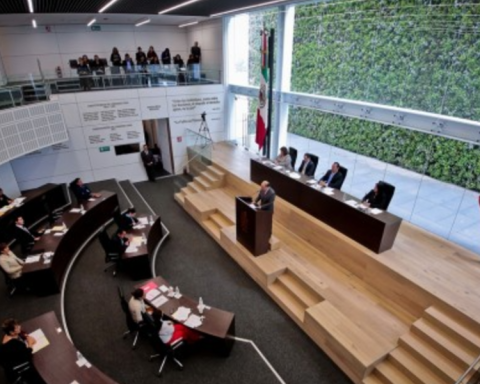Do you know the sadness you feel when you look for your son and you don’t find him?
– Now I finally know that my son will never come back.
– Identification helps to close a duel.
– I thought that in all these years I had already made a closure, but no, it looks like I was still waiting for it.
They are words spoken by women from Malvinas – mothers, sisters, girlfriends – those who saw their loved one leave in April 1982 on an unknown adventure, commanded by Leopoldo Galtieri during the last year of the civic-military dictatorship that governed the country.
Do you know the sadness you feel when you look for your son and you don’t find him?
In the Falklands War, 649 Argentines died, of which almost half -323- were victims of the sinking of the cruiser ARA General Belgrano. Some 237 fallen on Malvinian soil were buried after the war in the Argentine cemetery in Darwin, designed and organized by the then British Colonel Geofrey Cardoso a few months after the conflict ended.
Cardoso collected the bodies and remains of the Argentines from the battlefields, covered them with three plastic bags and buried them. Due to their plates and the belongings they were carrying at the time of death, the English soldier was able to know the name and surname of a large part of them, but more than a hundred (121 exactly) could not be identified at the time of their burial.
“When I left the islands I felt enormous relief for having done my job, but also frustration for all the boys I had not been able to identify,” he told Télam a few years ago on a humanitarian trip to the islands.
The complete story of the identification process of the Malvinas soldiers who remained buried for 35 years under the plaque “Argentine soldier only known by God” has many protagonists: the Center for Veterans (Cecim) of La Plata, the veteran Julio Aro; Cardoso; former Pink Floyd Roger Waters; the prestigious Argentine Forensic Anthropology Team (EAAF) and the political authorities of the governments of Cristina Fernández de Kirchner, Mauricio Macri and Alberto Fernández.

A fundamental role also falls to the relatives of the fallen, who for 35 years did not receive any official notification from the Argentine State about the fate of their loved ones. After a long period of mistrust and logical resentment due to the state’s absence for so long, the relatives gradually provided the valuable DNA that allowed the identifications.
“Despite the fact that in the early days the commission had a tough stance and we did not want the cemetery to be touched, today I can say that the feeling is one of gratitude”María Fernanda Araujo, current president of the Commission for Relatives of the Fallen in Malvinas, tells Télam, sister of soldier Elbio Eduardo Araujo, who, for 37 years, was an “Argentine soldier only known by God.”
“The entire identification process brought recognition to the families and, in this way, the dead gave visibility to the living. Recognition heals in every way,” says Araujo, who considers that the group of relatives was also forgotten after the war, like the procrastination experienced by veterans, which caused as many suicides as deaths during the conflict.
After intense diplomatic efforts, the governments of Argentina and the United Kingdom have so far agreed on two stages of the so-called Humanitarian Project Plan and a third is underway, all of them entrusted to a neutral body: the International Committee of the Red Cross (ICRC). .
In recent years, all these actors constituted a diplomatic and humanitarian mechanism that managed to heal many wounds after the war and show the world an example of reparative policy, despite the fact that the diplomatic conflict over the sovereignty of the islands is still latent.

Already after the war, various groups of ex-combatants promoted the need for identification, but the Relatives Commission opposed it for a long time.
“The first request for identity was in 87/88 to the EAAF when they began to work with the DNA samples. But only in 2005 were we able to return to Malvinas”, recalls Ernesto Alonso, from the Cecim de La Plata.
In 2008, Julio Aro -a veteran of the 6th Mercedes Regiment- traveled to London to give talks on post-traumatic stress and Cardoso was assigned as a translator, without knowing what role he had played after the conflict. On the last day of his stay in the British capital, the English soldier gave him all the documentation that he had kept for years with the details of the burials in Darwin, which, at the time, had also been addressed to the Argentine military authorities, but never informed to relatives. All this information was key to the identification process undertaken a decade later.
In 2011, the Cecim de La Plata and a group of relatives promoted a case for the right to truth in the federal court of Julián Ercolini and a year later the justice recognized that right and ordered the Argentine State to do everything in its power to carry out the process.
At the same time, Aro promotes the Don’t Forget Me Foundation and -together with the journalist Gabriela Cociffi- tirelessly travels the country in search of relatives. In 2012, Aro and Cociffi contacted the English musician Waters, who had planned to visit the country and meet with the then president Fernández de Kirchner. The author of the emblematic ‘The Wall’ is thus committed to the cause and interceded with the Argentine President and then with the British Prime Minister, David Cameron.
On April 2 of that year, on the occasion of the 30th anniversary of the war, while speaking at an event in Ushuaia, Fernández de Kirchner formally announced that he was requesting the collaboration of the International Committee of the Red Cross to open a negotiation with Great Britain.
“The first request for identity was in 87/88 to the EAAF when they began to work with the DNA samples. But only in 2005 were we able to return to the Malvinas”Ernest Alonso
Then intense diplomatic negotiations begin. In December 2016, during the Macri government, the agreement between the two countries was signed to carry out the humanitarian mission that had been postponed for decadesand the ICRC is summoned for this purpose, which in turn adds to the work the prestigious EAAF, recognized worldwide for its forensic work.
The first exhumation work of 123 graves is carried out in the Darwin cemetery between June 20 and August 7, 2017. During those almost two months of work, 122 bodies from 121 graves are exhumed, analyzed and reburied. . Bone and tooth samples are taken in a laboratory set up in the same cemetery, which will be sent for analysis to the EAAF Forensic Genetics headquarters in Córdoba.
After this first part of the project, 115 soldiers managed to be identified. The first notifications to their relatives are made in the National Memory Archive, located in the former Esma. They are intimate, careful, emotional, heartbreaking meetings in some cases. Some privileged ones, in addition to confirming the exact place where their loved ones were buried, take details about the cause of death and something even more impressive: belongings that lasted 35 years buried next to the body, such as chains, crosses, rings, letters , religious stamps and identity documents.
On March 26, 2018, a contingent of 210 family members traveled to the islands for a few hours, on a trip that Télam was part of., to see for the first time the exact location and name of your loved one engraved on a headstone. It was a day of full sun, almost without wind, something unusual for the climate of the islands. Chairs are placed in front of the graves for elderly mothers and fathers. But many still lie down or kneel on the Falkland mob.
The first exhumation work of 123 graves is carried out in the Darwin cemetery between June 20 and August 7, 2017
“Now I feel a lot of peace for them. Now I have finished my work”said at the time Cardoso who was part of the entourage, containing and accompanying the relatives before each tomb.
The second part of the humanitarian plan is carried out during August 2021but with a totally different job: a multiple tomb is buried and six identity confirmations are achieved.
On March 1, when opening the legislative sessions in Congress, President Fernández announced a third part of the plan: “We have expressed our interest to the International Committee of the Red Cross in the realization of a third stage of identification, as part of the initiative launched in 2012 and that has had continuity in successive governments,” he said when speaking before the Legislative Assembly. There are still no details about what this new initiative will consist of.
“If there is a fundamental right, it is the question of identity. Behind each identity there is a story of a person with links. The recovery of identity is the reconstruction of a history. Justice never allowed us to be told the cause of death, but the body speaks,” says ex-combatant Alonso, as a balance 40 years after the war.
As the writer and teacher of journalists, Leila Guerrero, accurately writes in her recent book “The other war. A history of the Argentine cemetery in the Malvinas Islands”, the names of more than one hundred combatants “took 35 years to be sculpted; not in the big story but on a tombstone”.
Today those bodies buried in Darwin constitute the only Argentine presence in the Malvinas Islands.
